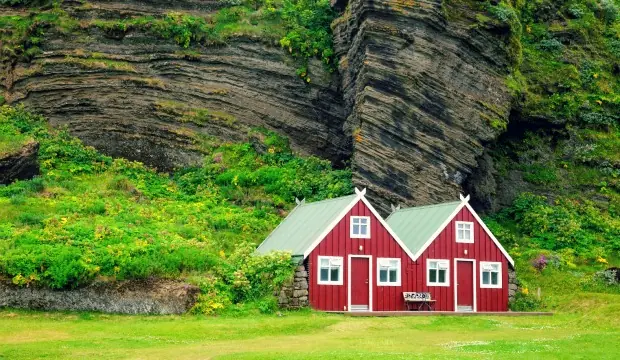
Traditionally, there are two types of campers: those who delve deep into the backcountry with hardcore abandonment and those who pitch their tents near the car or stick to fully-serviced RV parks. This dramatic split, however, has started to change with the rising popularity of hut-to-hut camping. This style of adventuring works as a happy medium between the two extremes by mixing physical challenge with the comfort of a warm shelter.
More: 5 Unusual Outdoor Lodging Picks
Hut-to-hut camping has long been a favorite among Europeans and New Zealanders, areas that have made backcountry hiking more of a civilized endeavor. And the United States has certainly been taking notes; America now offers several great options for people looking to participate in hut-to-hut trips. Not only that, but there are also growing opportunities to do it during the winter. With that said, here's a little advice on how to get started this snow-covered season.
PreparationJust because hut-to-hut camping offers more amenities than other backcountry options, don't be fooled into thinking it's any less rigorous, especially in the winter. Snowshoeing and cross-country skiing require more energy than standard hiking and weather conditions are often much more taxing. Because of this, be certain that you're in the proper physical condition to travel from one hut to the next (usually 6 to 8 miles) and you have prior experience hiking in cold weather.
Having the right gear is essential. This includes versatile clothing layers that can be added or removed quickly in relation to your level of activity, or a sudden change in temperature. It's important to stay as dry as possible during winter activities, as moisture such as sweat or precipitation becomes miserably cold when you stop moving; waterproof and breathable gear is recommended.
The benefit of hut-to-hut camping is you don't need to haul as much gear when trekking, but you do still need to have food, water, emergency supplies and a quality sleeping bag if bedding isn't supplied at your hut. Also, be comfortable with your snowshoeing and cross-country skiing gear before embarking on a multi-day journey. Test your gear on shorter hikes if the equipment is new.
More: What is Yurt Camping?
The Hut SystemThere are some great hut systems emerging in this country, with many of them offering winter services. These huts are private operations and therefore vary greatly from one company to the next, with the most basic service offered being shelter. Some operations, however, go as far to include hot showers, toilets, and home-cooked meals. The price per day, of course, will be reflected in the level of comfort offered.
Maine has a great service called Maine Huts and Trails located in the central part of the state near Flagstaff Lake. This company has a wide variety of activities available based on each specific hut and season; these accommodations are of the upper echelon in quality and comfort. For a shared room you will spend roughly $100 per night.
New Hampshire has one of the oldest hut systems in the country, owned and operated by the Appalachian Mountain Club. Spanning eight huts with about 7 miles between each, this system was modeled after those found in the Alps. Hikers can reserve overnight bunks, with the huts holding anywhere from 36 to 96 people. The drawback about winter is only three of the cabins stay open and they revert to self-service (as opposed to the summertime's full-service). These three huts include: Zealand Falls, Lonesome Lake and Carter Notch.
Colorado has arguably the best winter system, with 10th Mountain Division Huts leading the scene. The reason this state is so good for hut-to-hut camping is because the elevation allows you to achieve the intrinsic beauty of unblemished high country. The 10th Mountain Division huts range between 9,700 and 11,700 feet. There are 30 huts available and each holds 3 to 20 people; prices range between $28 and $33, and the huts typically include beds and a stove.
With any of the hut systems mentioned, it's important to make reservations early. Some people begin booking in June for the winter season. As previously mentioned, this is becoming a very popular activity and the supply of huts is limited. There are, however, certain huts that are free of charge and require no reservations. These lack nearly all amenities; the most popular of these free huts are found along the Mount Tahoma Trail in Washington.
So, with all of this information to consider, it's time to start planning your trip, contacting hut-to-hut systems in the areas you would like to explore, and getting your gear ready for a multi-day adventure.
More: 8 Luxury Campgrounds for Glampers
 Book your next camping trip
Book your next camping trip



